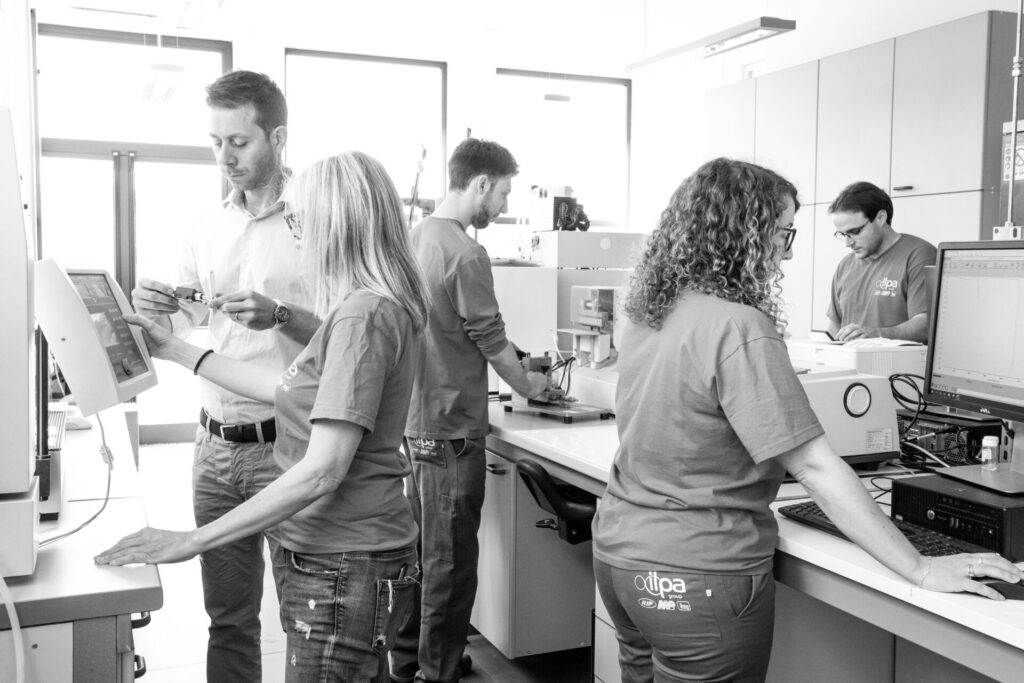R&D:
how does the material characterization process take place?

The characterization process of a material aims to characterize the type of laminate in sheet or roll in terms of:
- structure
- appearance and characteristics of the surface
- composition
which determine its performance and compliance for specific applications and/or technical regulations.
In MP3, this evaluation applies both to competitor products, to offer our partner a countertype, and to internal products in the development phase.
Structure
many of MP3 products are made through a co-extrusion process that determines the creation of a laminate made up of multiple layers. A first step consists in determining, where possible, the overall structure of the laminate (number, thickness and if possible composition of each single layer).
Surface
One of the peculiar aspects for many applications lies in the final appearance of the product. Through the characterization process on the laminate, depending on the case, the following can be evaluated:
- Color
- Gloss (brightness/opacity)
- Degree of surface roughness
- Anti-dust/dissipative/conductive properties
- Degree of deblocking treatment (reels only)
MP3 is also structured to evaluate the anti-scratch properties of surfaces to which a coating has been applied, such as abrasion resistance, verification of coating adhesion or anti-scratch properties.
This phase allows the creation of not only a product with the desired aesthetic properties, but also with the surface performance (such as deblocking, anti-dust or anti-fog effect) required by a specific application.
Composition
Through the combination of different complementary analytical techniques, it is possible to identify the type of polymer used (in the case study on competitor products) and its performances of:
- processability (evaluation of the softening T°, behavior in the molten state, etc.)
- mechanical (impact tests at room temperature and cold, tensile tests)
- aging (natural and accelerated aging tests – simulation of external and internal exposure behind glass)
The information derived from the analyses described (which evaluate the product considering different aspects of the product itself) allow the characterization of existing products on the market and the possibility of offering equivalent grades of MP3 products, as well as allowing the creation of a structured and detailed internal database relating to MP3 products’ range for the definition of product specifications. It is true to say that the phrase “know thyself” also applies to plastic laminates.
